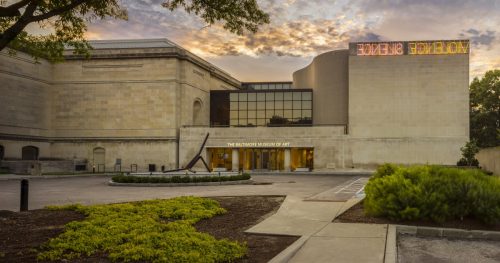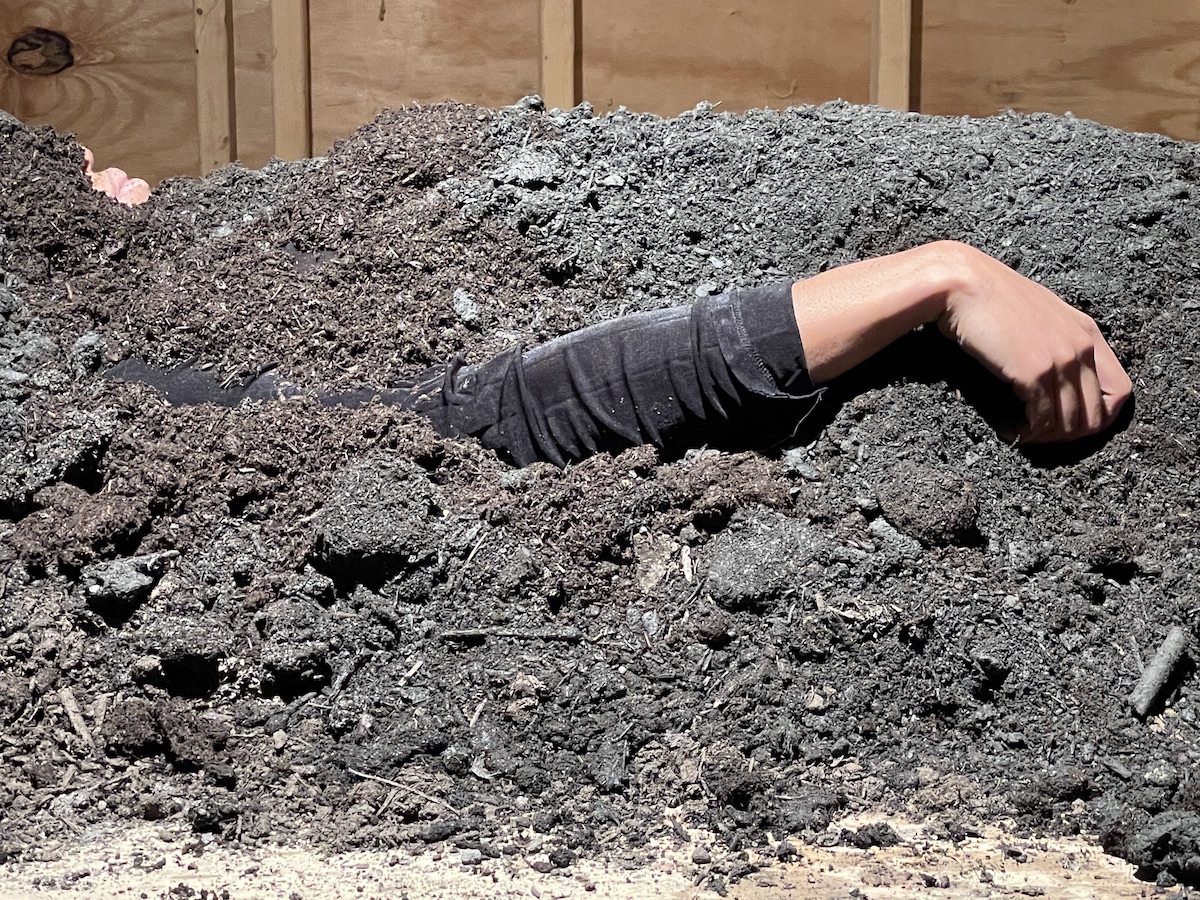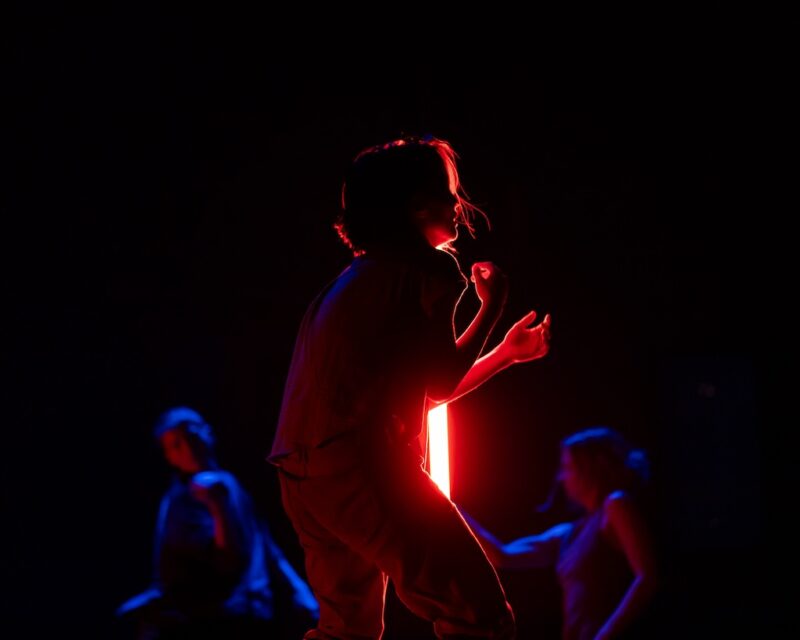Ada Pinkston: When did you do your first burial piece?
Lynn Hunter: That was in 2018 at MICA for a show that was curated by Zion Douglass and Destiny Belgrave. It was one of their senior shows, and they had a few artists in it. That was the first time that I did a burial with the soil. It was in the Brown building.
The performance at The Fray was also in 2018, and I did that one with my Mom. But that time I used rocks instead of soil or sand. I was trying to experiment with the type of material that I was using.
The third time was at Artscape with LabBodies, and I used sand and water as the material to bury my body under. The first day was water, and the second day was a bunch of sand. And I used a PVC tube for breathing underneath these materials.
Why use burial as an image or performance gesture?
My initial process was from being inspired by some work that Morgan Parker put out. They published this piece called “Toward a New Theory of Negro Propaganda.” There was one quote that said: “Is it possible, that in the dark slumbering of their unconscious, the white imagines that the only remedy for fear is death?” So it really just got me thinking about the general concepts of fear towards death and how Black people in America have such a heightened sense of that. We have come up with so many ways to transcend the ideas of death. And our spiritualities allow us to ascend past the idea of death.
As a Black person, you literally don’t know when it could happen. And it could happen sooner than you would think and for a reason that you wouldn’t even consider. It kind of places a new urgency around living life. So I was experimenting with that trauma and the idea of being buried. At the time, I was going to funerals and seeing family members being buried. And I really don’t like the idea of funerals and burials. I know when I die, I think I would like to be cremated.
What do you do with the dirt that you used in these performances?
Most of my performances are outside. Because of this, after the performance, I let the sand or the rock be where they are. Then the elements, like rain, will come and take care of it. I don’t really have the space to keep the materials, so I usually just keep getting new ones.
[Ed. note: The soil from The Shed performance will stay with the space for possible future projects in the garden.]












